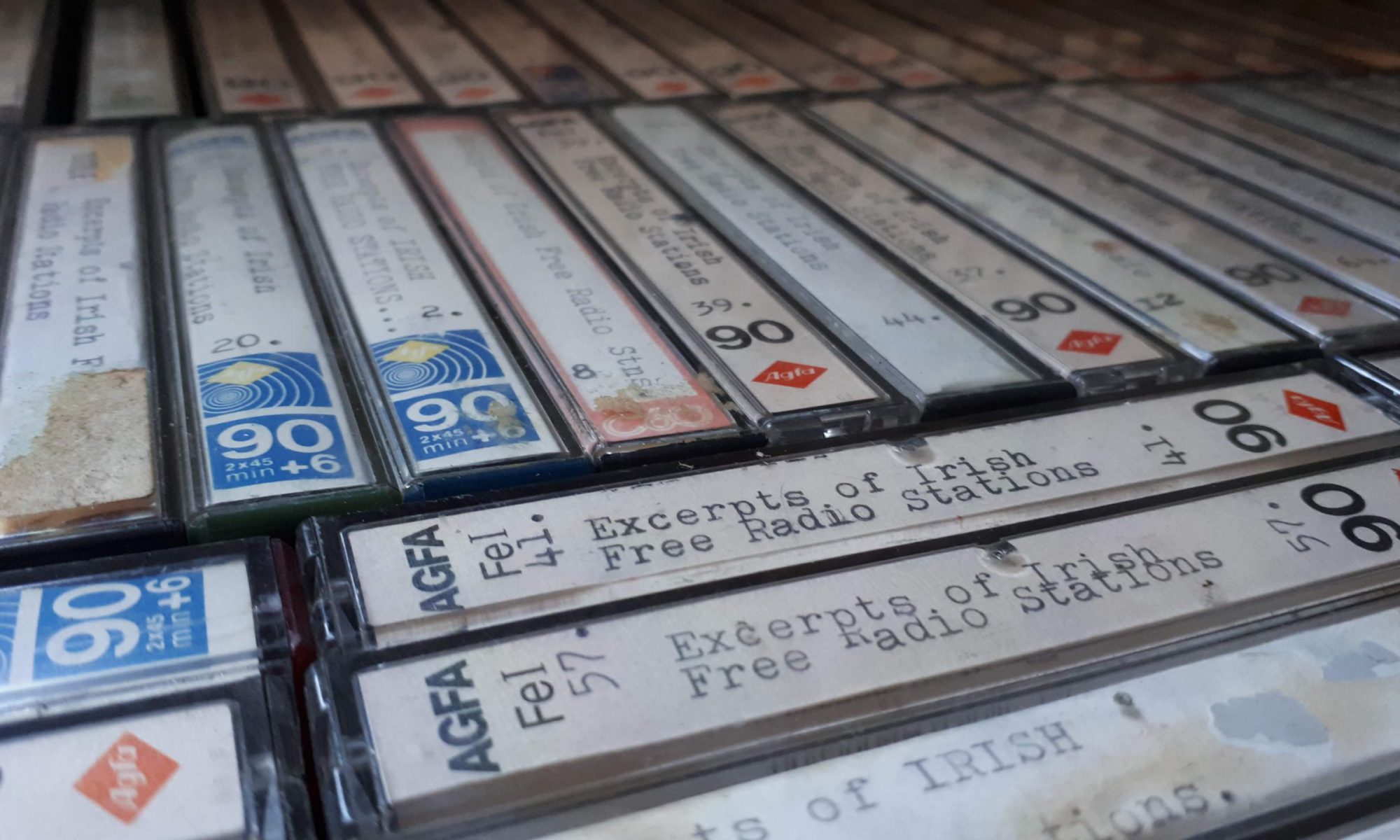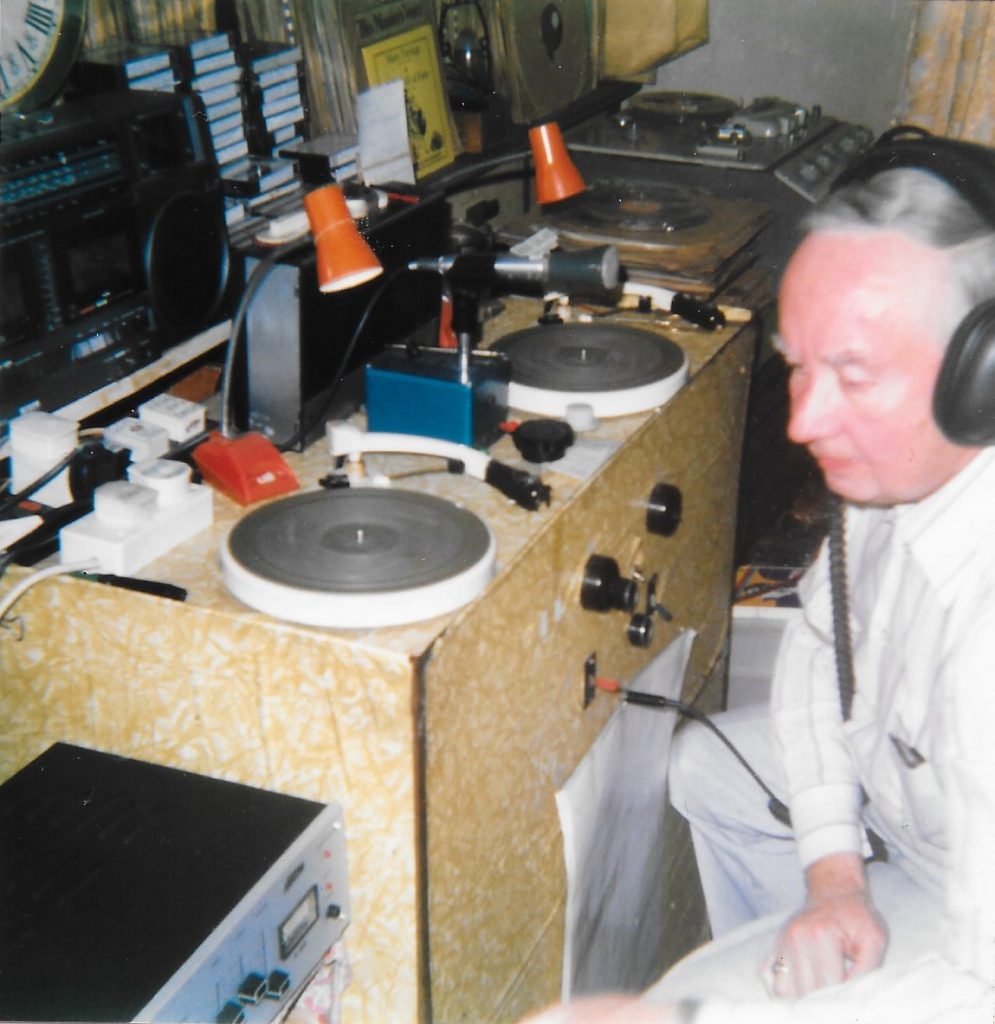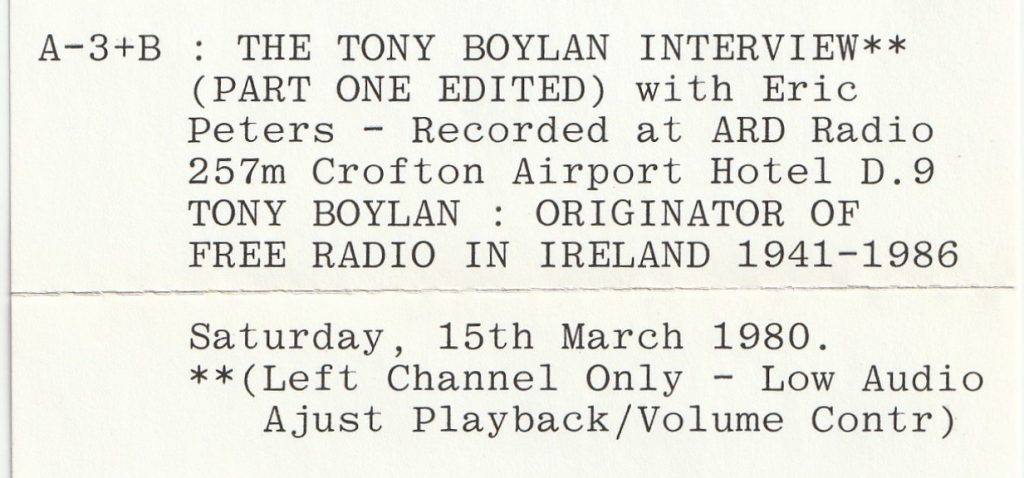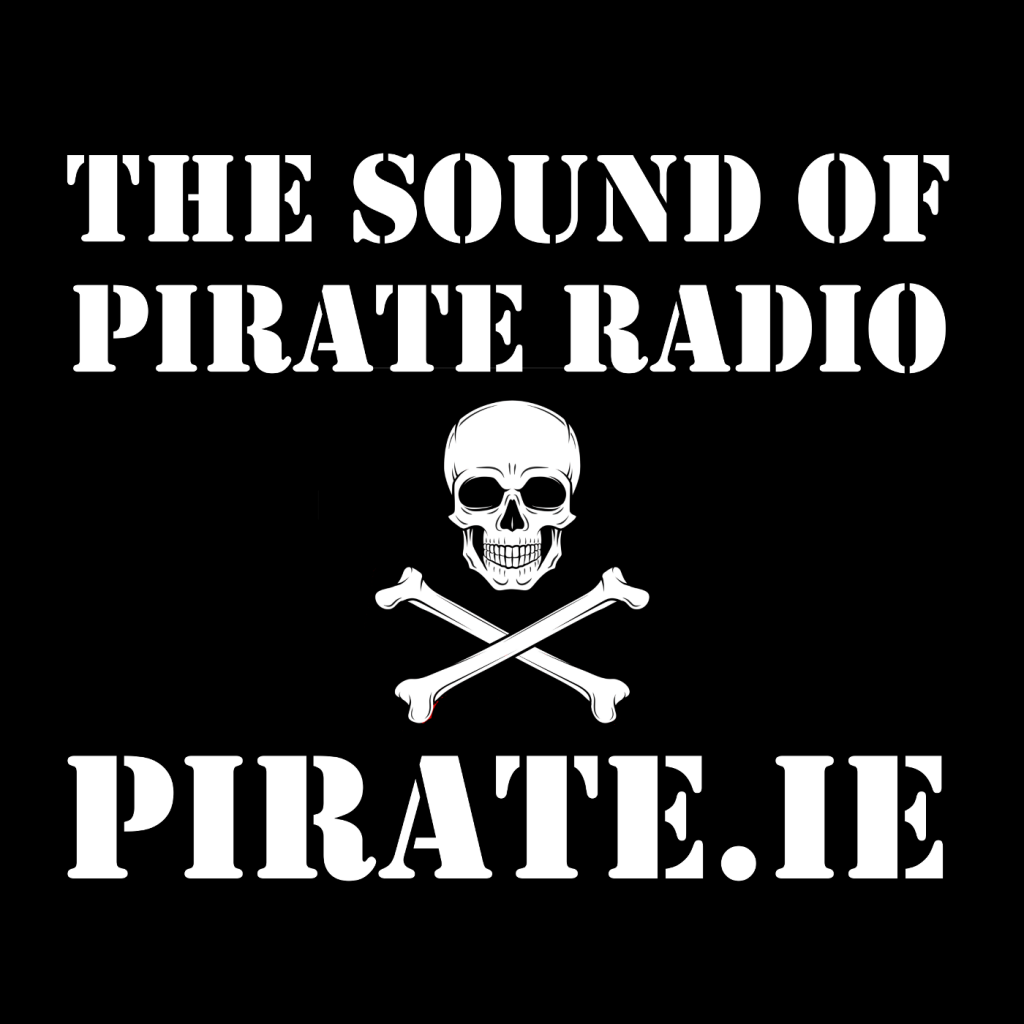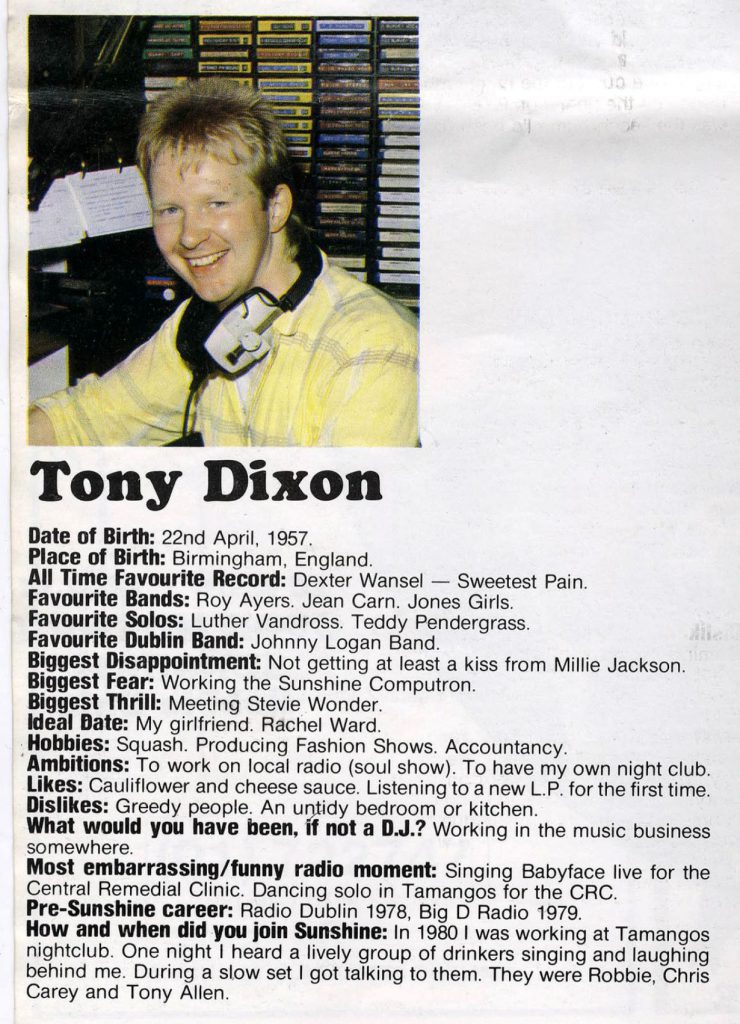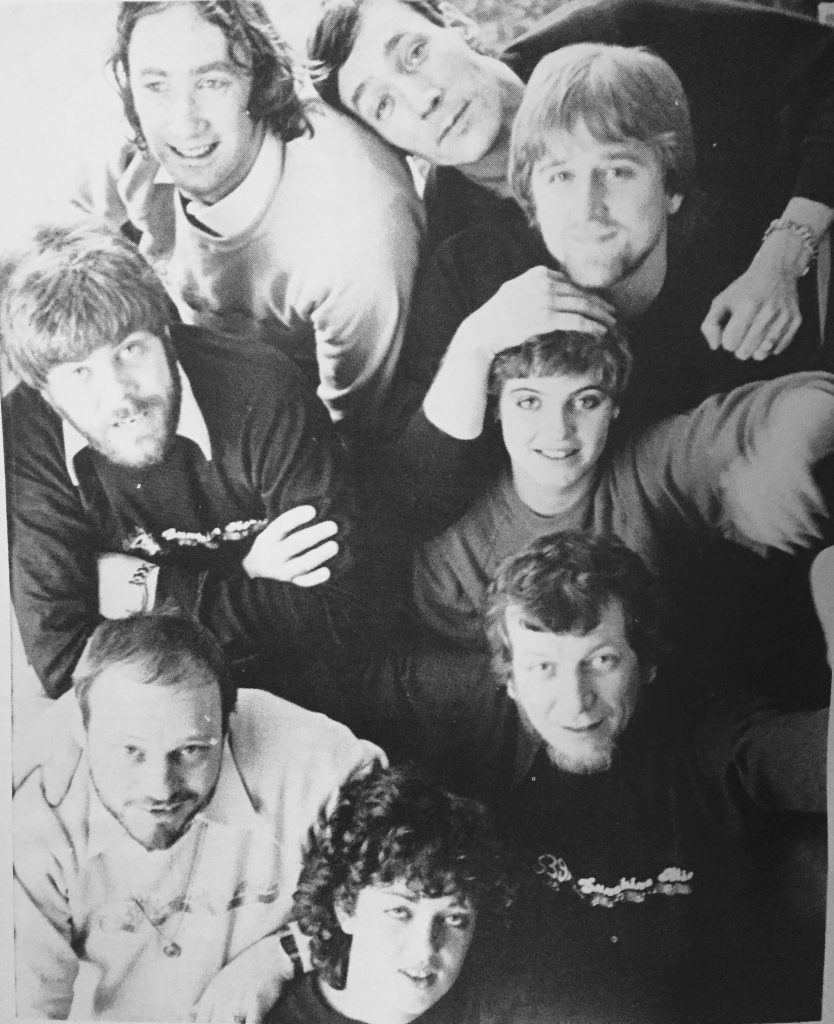Podcast: Play in new window | Download
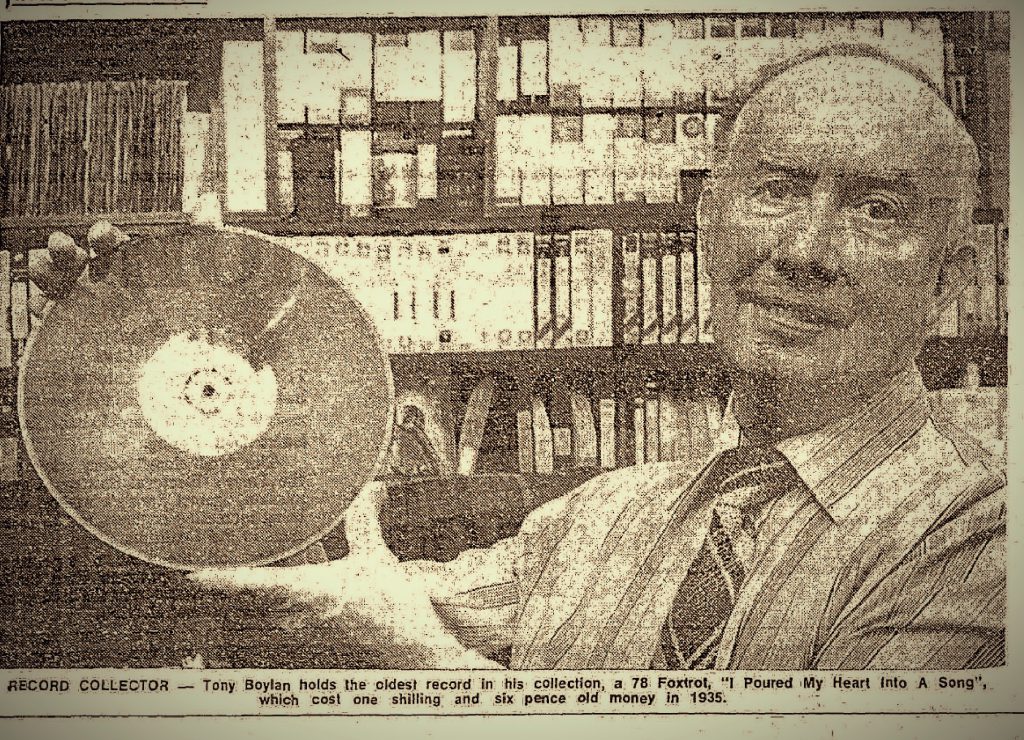
Radio Galaxy was one of the pioneering Irish pirates, broadcasting from as early as 1955 and operating regularly on Sundays from 1969. It was operated by Tony Boylan (RIP) who first experimented with pirate radio in 1945 and operated stations over the years from different parts of Dublin. Tony’s love of 78s made him unique in the pirate radio world and his programmes, co-presented on occasion with his wife Fran, gained loyal listeners across the decades. In 1986, he retired and moved with Fran to the Isle of Man, having sold his extensive 78s collection.
This recording was made just a fortnight before Radio Galaxy closed down for good. It begins with continuous music followed by the weekly 78s Show. There are several requests from listeners around Dublin and from as far afield as Lancashire. Tony announces that he is moving to the Isle of Man shortly and says he hopes to get a slot on Manx Radio, noting the absence of pirate radio in the island. The tape was made from 1512 kHz AM (196 metres) from 1138-1223 and 1230-1315 on Sunday 7th September 1986. It is from the Anoraks Ireland Tapes Collection.
Radio Galaxy’s final broadcast was on 21st September 1986. Tony died in the Isle of Man in 2010.
